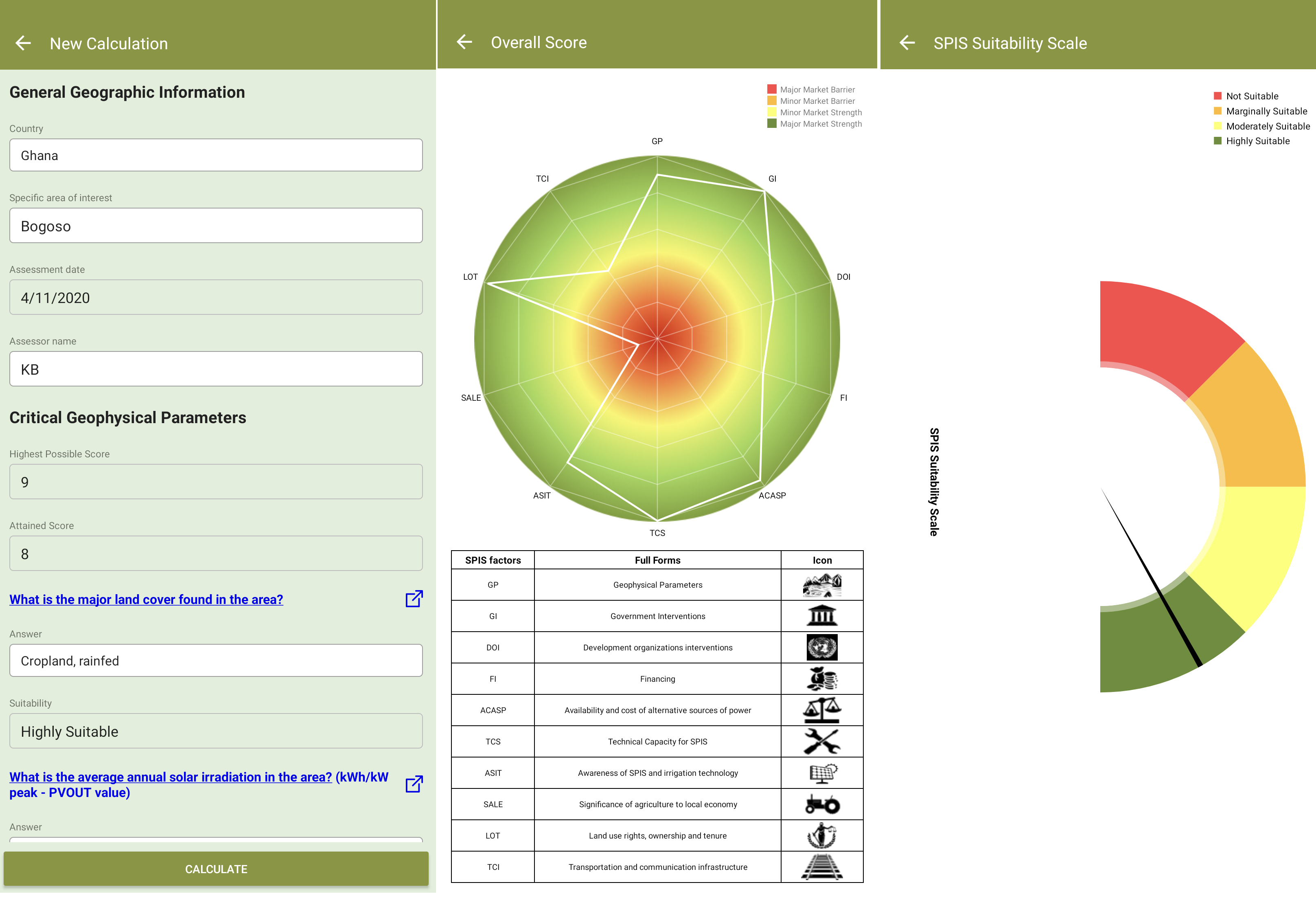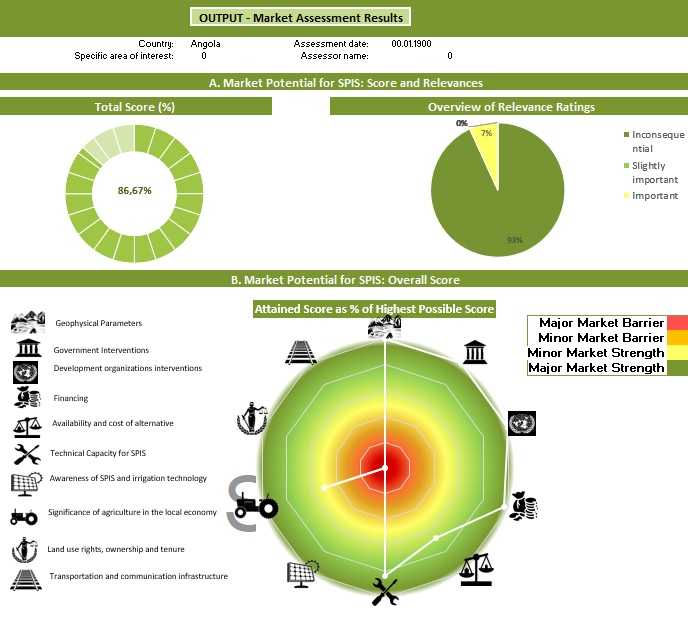


The Market Assessment Tool considers basic geophysical parameters and provides guidelines and weights to evaluate parameters that inform an enabling business environment for SPIS. The Market Assessment Tool aims to provide information conducting market potential assessments for solar powered irrigation systems within a country or region. It provides parameters for consideration that may be applied by varying stakeholders (including private SPIS companies, policy-makers, financial institutions and development practitioners) in assessing the market potential of SPIS. Parameters used to assess the market potential include geophysical parameters such as solar irradiation, precipitation, land cover and use, and business environment parameters (such as Government Interventions, Development Organization Interventions, Financing, Availability and Cost of Alternative Fuels, Technical Capacity, Awareness of Solar PV Technology, Significance of Agriculture in the Local Economy, Land Access and Tenure, Transport and Communication Infrastructure).
Accurate data on precipitation, land cover and use, and solar irradiation; ground truthing
Identification of target markets for SPIS involves the evaluation of numerous parameters. These may include various geo-physical and business environment parameters. For stakeholders who do not have a set target market in mind or who merely want a high-level overview of potential areas where systems could be set up or utilized, this could prove to be a daunting and time-consuming task.
In assessing market potential for SPIS, stakeholders need to assess the irrigation viability of their target location from a land cover-land use perspective. It is always important to follow up desktop analysis of landcover with actual on the ground visits to the selected areas.
Set up of solar panels in regions of low solar radiation could lead to high set up costs resulting from the use of a greater number of panels. Because of technological advances, solar irradiation is more of an economic consideration than a question of technical feasibility.